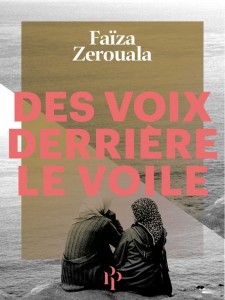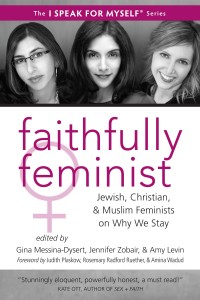Books give me an overpowering thrill: something about knowledge in a portable, substantial form makes me feel secure. Chunks of time just slip through my fingers whenever I’m in a bookstore. But it’s not because I’m browsing books and reading chapters…it’s because I’m rearranging shelves.
I frequent the religion and world history sections, interested in what’s being said about the Middle East and Islam. And, if you analyze these topics by looking at a Barnes & Noble shelf, then you’d probably assume that we’re all either barbarous terrorists who delight in culture/religion-sanctioned brutality or passive (female) victims of our cruel cultures/religions. White, Western academics have been spouting these stereotypes for centuries. But look who’s talking now: Middle Eastern and/or Muslim women themselves are starting to echo the Orientalist babble. Fatemeh Keshavarz, who has just released a book Jasmine and Stars: Reading Past Lolita in Tehran, calls this the “new Orientalism.”
There are several Middle Eastern and/or Muslim women who are writing positive books about life in their respective countries, cultures, and Islam (Asma Gul Hassan’s books about Pakistani culture or Islam, or Firoozeh Dumas’ memoir about growing up Iranian in America, for example). But you won’t see these authors prominently on display in Borders; usually, one copy of them is tucked away on the bottom shelf. The eye-level displays are all about confirming America’s fear or disgust at Islam and the Middle East. You’ll only see books about a Saudi Arabian princess’s life in a Real-Live Harem!
The resurgent tensions with Iran have caused a slew of “tell-all” books (disguised in memoir format) by Iranian women. Doesn’t anyone else find it interesting that a majority of these books (mostly about Iran by Iranian authors) came out very quickly once U.S.-Iran tensions heightened? You can read about the harrowing experiences of Ghazal Omid, whose book Hell: A Memoir of Life in the Islamic Republic of Iran leaves even the most unimaginative reader with an idea of what life in the IRI must be like for every woman. Or read A Mirror Garden: A Memoir by Monir Farmanfarmaian and Zara Houshmand, which paints pre-Islamic revolutionary life in Iran as glamorous and carefree, only to be shattered by Khomeini and his Islamic revolution. Books such as these only take into account what pre-revolutionary life was like for the wealthy, Western-educated upper class; for the majority of Iranian women, life wasn’t about playing twister with the Shah or traveling to Europe. Books like Prisoner of Tehran: A Memoir and Lipstick Jihad paint life in Iran as nothing but bleak and overwhelmingly oppressive, all because of that pesky Islamic revolution! And the failings of this government and society are all attributed to Islam, not to corruption within the ranks or patriarchal traditions within Middle Eastern culture.
And it’s no better in the religion section: Ayaan Hirsi Ali’s Infidel sits right next to the Holy Qur’an in Borders. Believing what Hirsi Ali says about Islam is like accepting what a Mexican jumping bean tells you about Latino culture. Hirsi Ali uses her negative experiences with Muslims as a way to analyze Islam, blaming Islam for the people who have wronged her, instead of leveling the blame at those individuals who deserve it.
I don’t want to diminish these women’s experiences: their subjection to assault, imprisonment and torture, and discrimination are important for us to look at as overreaching examples of the dangers that women face in every patriarchal culture. But these books don’t deal with their authors’ experiences in this way; the stories pander to the sensational Orientalist ideas of exotic harems and dangerous scimitar-brandishing desert-dwellers.
These books’ shelf presence reflects the U.S.’s anti-Islamic, anti-Middle Eastern agendas. The positive experiences that women have with Islam or the Middle East are left off of the shelves (or out of the publisher’s office) because they are not what America wants to hear. America wants to hear about how horrible Islam is, not how American women are converting to Islam; they want to hear about the danger of life in the Middle East, not the rosy childhood memories of Middle Eastern authors.
The experiences these women are telling are valid and important, but they fall into a well-known trap. Women of color aren’t given a chance to tell their stories correctly, being forced (or choosing) to sell out their country and/or their religion in order to get their story told at all. Perhaps Hirsi Ali chose to “sell out” Islam because it would get her points with her new bosses (the conservative think-tank American Enterprise Institute). Perhaps, with Jean P Sasson’s Princess: A True Story of Life Behind the Veil in Saudi Arabia, the princess really just wanted to dispel the Western myths about harems.
But these women were either forced or brainwashed into parroting stereotypes. The only difference between these stories and older ones is that these stereotypes are now coming out of “insider” mouths instead of white Western brains.













